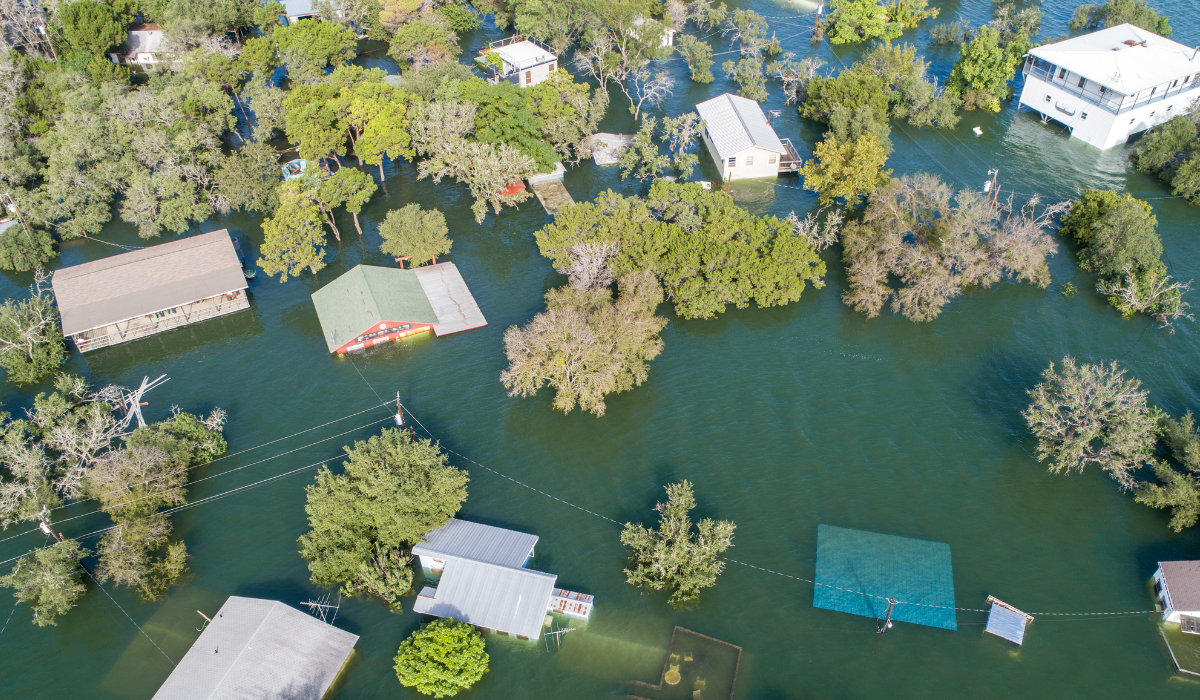Addressing flood risk
Flood is the most frequently occurring natural disaster globally, resulting from heavy rainfall, rapid snowmelt, or storm surges in coastal areas. It is also considered one of the costliest perils of the 21st century, second only to tropical cyclones, with global economic losses reaching $84 billion and insured losses at $21 billion in 2024.
Flooding causes widespread property damage for businesses—but its impact goes far beyond physical loss. Operational disruptions can last for weeks or even months, affecting stock, supply chains, and access for both customers and employees, leading to significant additional costs. As flood losses rise, insurers are responding with tighter sub-limits and more restricted coverage, creating a substantial protection gap for industries in flood-prone areas where capacity is increasingly limited.
Impacted by large-scale climatic phenomena and subject to climate change, estimating flood risk can be challenging for corporations. However, Descartes helps brokers and their clients with accurate modeling that enables them to understand their unique risks better.

Assess
We assess and evaluate the client’s flood exposure, leveraging river and rainfall data as well as third-party sensor data.
Customize
Design a customized cover, fit to the client’s unique needs, in which payout structures are indexed according to the water level.
Monitor
Upon policy inception, we monitor the insured's location for flooding to determine whether a qualifying flood has occurred.
Payout
Insured client receives a payout within days of reporting a loss, accelerating financial recovery and return to normal operations.
Our case studies are all over the world
Utilizing Machine Learning and real-time monitoring from satellite imagery & IoT, our state-of-the-art technology helps businesses bounce back faster against climate, cyber and other emerging risks.
Our parametric approach to flood risk
Descartes offers three parametric flood solutions: Flood-at-Location, River Gauge, and Excess Precipitation. Our parametric products offer coverage against direct and indirect losses, utilizing a combination of historical flood data and advanced risk modeling capabilities.
Flood-at-Location:
Utilizes on-site sensors installed by third-party experts to precisely assess and measure flood risk in real-time
River Gauge:
Utilizes a preselected river gauge to monitor the water level index
Excess Precipitation:
- Utilizes gridded rainfall data to detect flood events on client sites away from rivers
Our cost-effective approach ensures clients receive precise, customized flood protection tailored to their specific needs.

Who should consider this?
Descartes’ flood products are uniquely designed to address key industries exposed to risk, such as:
- Retail
- Manufacturing
- Hospitality
- Real estate
- Infrastructure
- Construction
Our products also cater to both domestic and international exposures across the globe and can be easily integrated into a client’s insurance program or captive.
Capacity
Up to $70 million per contract
Benefits Powered by Parametric Flood Insurance
Our parametric flood covers exemplify the effectiveness of parametric insurance solutions.
- Prompt Compensation: A swift, transparent process that clients can rely on, excluding the need for a lengthy indemnity claims process.
- Data-Driven Approach: The observation of historical losses and risk modeling allows us to accurately address client’s needs.
- Bespoke Policies: Coverage tailored to the client’s needs and budget.
Empowering Businesses and Brokers with Advanced Flood Insurance Solutions
Descartes partners with insurance brokers and their clients to transform flood risk protection through parametric insurance. Our exclusive flood products, competitive commission structures, and dedicated support make it easy for brokers to offer straightforward and customized parametric solutions, addressing one of the most damaging and increasingly frequent climate perils.
Our parametric flood coverage can complement existing property programs, accelerating recovery after major flood events with fast, transparent payouts triggered by objective data.
Our expertise includes
- Bridging and filling coverage gaps left by traditional flood insurance
- Supporting clients with high-risk exposures or limited access to conventional flood protection
By partnering with Descartes, you can
- Secure critical capacity in a tightening flood insurance market
- Differentiate your proposals and strengthen your position in competitive RFPs
- Access new markets and attract valuable clients exposed to flood risks
- Eliminate complex policy language and exclusions with a clear, transparent parametric policy structure
Co-create tailored solutions that reinforce your portfolio and build long-term relationships with clients and carriers
Success story: our parametric flood solution
FAQ
Where is the Flood-at-Location product available?
Descartes currently offers this product in the U.K. and other parts of Europe, eastern Australia, and the U.S.
What risks are covered with the Flood-at-Location product?
All types of flooding due to a meteorological event (riverine, flash flood, excess rain, storm surge, etc.) are covered.
Are business interruption losses covered?
Yes, this product covers business interruption losses, including financial damages resulting from a flood event covered by the policy, such as revenue decreases and increased operational costs.
Are there flood alerts with the Flood-at-Location product?
Yes, if a predefined water depth is detected by the sensor, the insured and Descartes will receive flooding alerts by SMS and email. The alert can be customized based on the insured’s needs.
Where is the River Gauge product available?
Descartes currently offers this product in North America, Australia, and Europe.
What damages are covered with the River Gauge product?
Our parametric policy covers any economic loss sustained from a triggering event, including but not limited to property damage, business interruption, and additional expenses.
How is the data source determined with the River Gauge solution?
We rely on publicly available data published by sources such as the National Oceanic and Atmospheric Administration (NOAA), the United States Geological Survey (USGS) and the Australian Bureau of Meteorology (BOM). We source most river gauge data from these sources or state government sources, when needed.
Interested in a solution?
